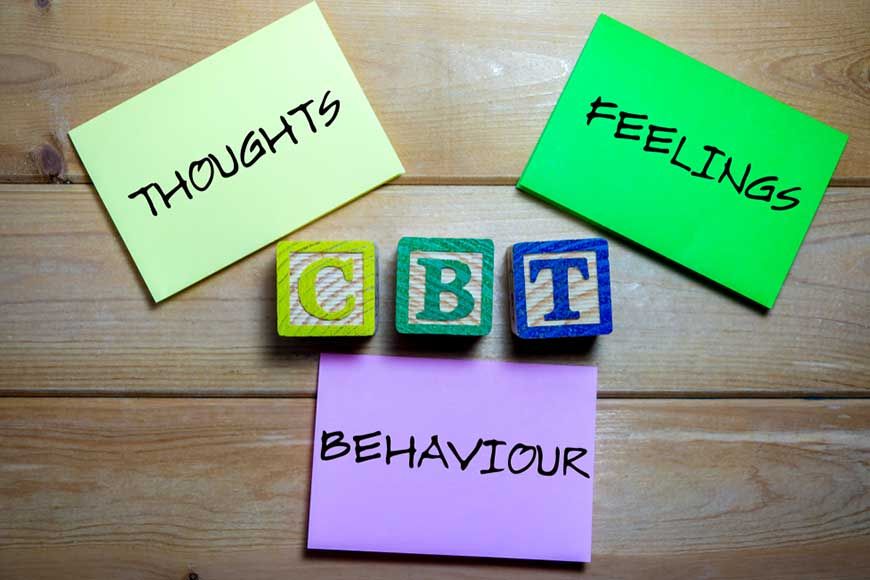By Azrung Fayaz, Doctor of Internal Medicine | MBBS, FCPS, MRCP
Updated on November 28, 2023
Published on November 20, 2023

Get latest news, updates, and trends on mental well-being

Did you know that depression is much more than feeling low? It affects every aspect of life, including your work. It can lead to burnout and mental health issues.
80% of individuals with depression can’t function at their best.1 Instead, 27% face severe challenges in their lives.2 Moreover, 18.3% of employees struggle with mental health issues.2
It’s time to address this issue. Dive into our comprehensive guide to understand how depression impacts your work. You’ll also discover effective strategies to help you survive and proactively prevent workplace depression.
Work-related depression is when your job constantly stresses you out.3
On the other hand, general depression affects how you feel everywhere, not just at work.4
It’s vital to understand this difference. This enables doctors to help you feel better. It also helps to prevent these feelings from returning in the future.

Work-related depression can result from:
Working from home can increase depression risk.9 For instance, depression rates are 17.9% among remote workers.10 This is much higher compared to those working on-site.
4 main challenges affecting those working from home include:
Together, these increase the risk of depression among people working from home.

Workers with depression underperform. This is because depression at work leads to:

Depression changes how you interact with your colleagues, bosses, and clients. For example, workers with depression report14:
Additionally, coworkers avoid interacting with depressed colleagues. This can hinder open communication and work performance. In other words, depression can have a ripple effect on the whole team.
Several types of therapy and medications can help with workplace depression. For example:
1. Cognitive Behavioral Therapy (CBT) helps people recognize and change harmful thought patterns. People learn how to handle work stress and deal with challenges at work. In one study, it dramatically improved the lives of 57% of patients.15

2. Psychodynamic therapy also works well for many people. It aims to fix the emotional issues leading to depression. Studies show it is as helpful as other therapies.16

3. Interpersonal therapy is another option. 89% of people reported feeling better with it.17 This is because it can improve your communication skills at work.

4. Medications like Selective serotonin reuptake inhibitors (SSRIs) and Serotonin and norepinephrine reuptake inhibitors (SNRIs) also work for workplace depression.18 But please consult your doctor before starting any medicine.

Taking time off work is a great way to reset. Here’s how you can approach it:
The CDC20 recommends getting professional help for work-related depression if you are:
Early identification of these signs can lead to timely help. This can improve outcomes. Thus, a proactive approach can lead to a faster recovery and better mental health.
A proactive approach towards mental health can prevent work-related depression. You can be proactive by doing these 5 things:

Work-life balance is vital to preventing work-related depression. To achieve it, the CDC22 recommends the following:
A supportive work environment is vital to your company’s productivity. To achieve this, employers can:
Work-related depression is a major challenge to well-being. Working from home, though, although helpful for some, is not a solution. It also has its problems.
Thankfully, the solutions are simple. Start by developing healthy habits and strive for a greater work-life balance. Therapies like CBT can also help. Also, remember, it’s completely okay to seek professional help when needed.
1. Depression. Published May 12, 2021. https://www.cdc.gov/workplacehealthpromotion/health-strategies/depression/index.html. Accessed November 2, 2023
2. Mental Health In The Work Place. Punlished July, 2018. https://www.cdc.gov/workplacehealthpromotion/tools-resources/pdfs/WHRC-Mental-Health-and-Stress-in-the-Workplac-Issue-Brief-H.pdf. Accessed November 2, 2023
3. Schonfeld IS, Bianchi R. From Burnout to Occupational Depression: Recent Developments in Research on Job-Related Distress and Occupational Health. Frontiers in Public Health. 2021;9. doi:10.3389/fpubh.2021.796401
4. Otte C, Gold SM, Penninx BW, Pariante CM, Etkin A, Fava M, et al. Major depressive disorder. Nature reviews Disease primers. 2016;2. doi:10.1038/nrdp.2016.65
5. Choi E, Choi KW, Jeong HG, Lee MS, Ko YH, Han C, et al. Long working hours and depressive symptoms: moderation by gender, income, and job status. J Affect Disord. 2021;286. doi:10.1016/j.jad.2021.03.001
6. Xu M, Yin X, Gong Y. Lifestyle Factors in the Association of Shift Work and Depression and Anxiety. JAMA network open. 2023;6(8). doi:10.1001/jamanetworkopen.2023.28798
7. Russo M, Lucifora C, Pucciarelli F, Piccoli B. Work hazards and workers’ mental health: an investigation based on the fifth European Working Conditions Survey. Med Lav. 2019;110(2). doi:10.23749/mdl.v110i2.7640
8. Ganson KT, Tsai AC, Weiser SD, Benabou SE, Nagata JM. Job Insecurity and Symptoms of Anxiety and Depression Among U.S. Young Adults During COVID-19. J Adolesc Health. 2021;68(1). doi:10.1016/j.jadohealth.2020.10.008
9. Kim HY, Hong YC, Lee N, Park J, Lee KS, Yun JY, et al. Working From Home, Work-Life Balance, and Depression/Anxiety Among Korean Workers in the COVID-19 Pandemic Period: A Mediation Analysis. J Occup Environ Med. 2023;65(2). doi:10.1097/JOM.0000000000002726
10. Şentürk E, Sağaltıcı E, Geniş B, Ö GT. Predictors of depression, anxiety and stress among remote workers during the COVID-19 pandemic. Work. 2021;70(1). doi:10.3233/WOR-210082
11. Tung TH, Hsiung MC. Work Fatigue in a Hospital Setting: The Experience at Cheng Hsin General Hospital. Healthc Pap. 2021;9(6). doi:10.3390/healthcare9060776
12. Dagne T, Beyene W, Berhanu N. Motivation and Factors Affecting It among Health Professionals in the Public Hospitals, Central Ethiopia. Ethiop J Health Sci. 2015;25(3). doi:10.4314/ejhs.v25i3.6
13. Uribe JM, Pinto DM, Vecino-Ortiz AI, Gómez-Restrepo C, Rondón M. Presenteeism, Absenteeism, and Lost Work Productivity among Depressive Patients from Five Cities of Colombia. Value in health regional issues. 2017;14. doi:10.1016/j.vhri.2017.03.001
14. Thisted CN, Labriola M, Vinther NC, Kristiansen ST, Strøm J, Bjerrum MB. Managing employees’ depression from the employees’, co-workers’ and employers’ perspectives. An integrative review. Disabil Rehabil. 2020;42(4). doi:10.1080/09638288.2018.1499823
15. Thimm JC, Antonsen L. Effectiveness of cognitive behavioral group therapy for depression in routine practice. BMC Psychiatry. 2014;14. doi:10.1186/s12888-014-0292-x
16. Schauenburg H. [Psychodynamic psychotherapy of depression]. Fortschr Neurol Psychiatr. 2021;89(3). doi:10.1055/a-1368-7056
17. Schramm E, Mack S, Thiel N, Jenkner C, Elsaesser M, Fangmeier T. Interpersonal Psychotherapy vs. Treatment as Usual for Major Depression Related to Work Stress: A Pilot Randomized Controlled Study. Front Psychiatry. 2020;11. doi:10.3389/fpsyt.2020.00193
19. Family and Medical Leave Act. DOL. http://www.dol.gov/agencies/whd/fmla. Accessed November 2, 2023
20. CDCTobaccoFree. Mental Health Conditions: Depression and Anxiety. Centers for Disease Control and Prevention. Published May 3, 2023. https://www.cdc.gov/tobacco/campaign/tips/diseases/depression-anxiety.html. Accessed November 2, 2023
22. Mental Health in the Workplace. Published May 5, 2021. https://www.cdc.gov/workplacehealthpromotion/tools-resources/workplace-health/mental-health/index.html. Accessed November 2, 2023
24. Russell RD, Black LJ, Pham NM, Begley A. The effectiveness of emotional wellness programs on mental health outcomes for adults with multiple sclerosis: a systematic review and meta-analysis. Mult Scler Relat Disord. 2020;44. doi:10.1016/j.msard.2020.102171
25. Voglino G, Savatteri A, Gualano MR, Catozzi D, Rousset S, Boietti E, et al. Original research: How the reduction of working hours could influence health outcomes: a systematic review of published studies. BMJ Open. 2022;12(4). doi:10.1136/bmjopen-2021-051131